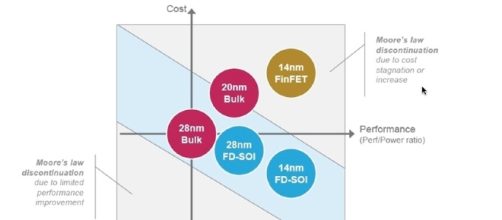It all started when Gordon Moore, the co-founder of Intel, made an observation. The observation being, the density of transistors in an integrated circuit doubles approximately every two years. Although more of a statement, Moore's Law has held up its stance for almost half a century. But not for long -- or so it seems.
With technology advancing at an exponential rate we seem to be approaching an invisible wall. In other words, we seem to be approaching the limits of our technology. The number of transistors in a circuit is directly proportional to the size of the transistor.
Meaning the smaller the transistor, the higher the number of transistors that can be put into a circuit dice.
Why is it slowing down?
To put this exponential growth into perspective, in 2000 the density of transistors in an integrated circuit used for an average computer was 37.5 million. In 2009 the number of transistors grew to 904 million. Meaning in 9 years, the number of transistors in an average computer increased 24.1 times. Most processors used in the latest computers average around 100 million to 150 million transistors, in other words, from 2009 to 2017 the number of transistors increased less than 1.5 times. Meanwhile, the size of a transistor went from 100+ nanometer in 2000 to <20 nano meters in 2017.
Now, things get tricky when the size of a transistor becomes smaller and smaller. Once the size of a transistor reaches below 5nm or so, we will reach a breaking point. At such small distances, electrons act differently. Electrons can freely pass through any barrier at such distances, as transistors rely on a barrier to stop the flow of electrons. it leaves a transistor virtually and literally useless.
We are fast approaching this limit and once we hit this limit, there is no way out.
Is it the end?
We can't be sure, but one thing for sure is that Moore's Law has bent but has not broken. Major companies are trying to use different materials with semiconductor properties to try and face this challenge, this will help to an extent, but it's definitely not a permanent solution.
Meanwhile, several other companies and researchers are taking a completely different approach to this. Trying to redefine what a transistor is, by heading into the realm of Quantum computing and Carbon Nanotubes.
Within the next decade or two, it will be the end of an era, the end of basic transistors as we know it. Instead, there will be a technological revolution that will change the way we define a computer. Be it quantum computing or carbon nanotubes, Moore's Law will still live on.


